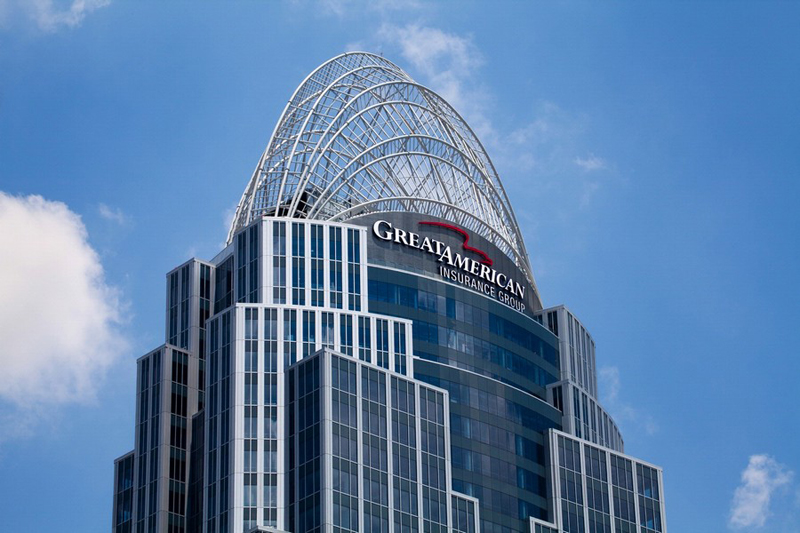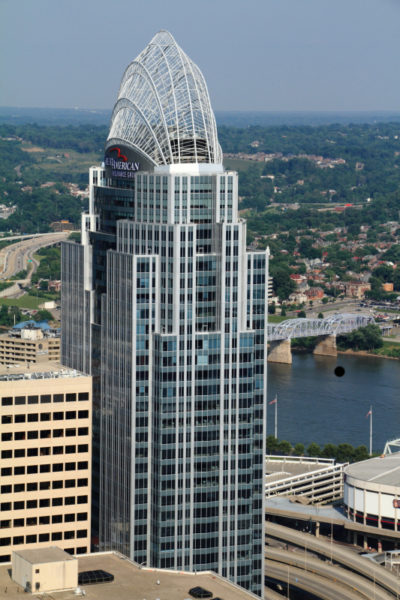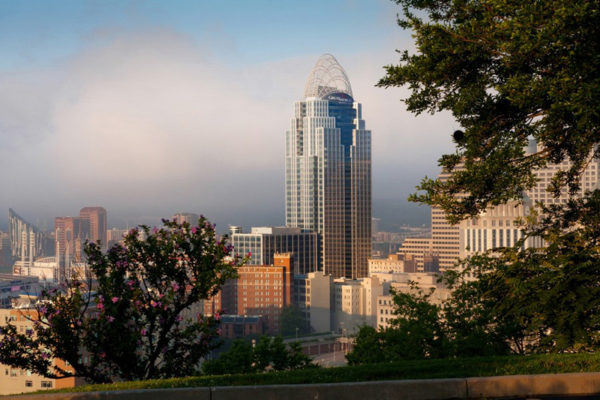In 2012, The Great American Tower in Cincinnati, OH won the Innovative Design in Engineering and Architecture with Structural Steel (IDEAS2) Award by the American Institute of Steel Construction (AISC) for the 13-story tiara that crowns the skyscraper. HOK Architects of St. Louis, MO, designed the tiara, which uses over 400 tons of arching structural steel and hollow sections in varied widths. For extreme durability and gloss retention, the Great American Tower tiara was coated using Tnemec Company’s 3 stage coating system with a topcoat of their Series 1072 Fluoronar fluoropolymer coating with Lumiflon FEVE resins.
Approximately 80 percent of the steel components of the tiara were assembled and coated by Owen Steel Company to minimize construction in the field. The individual structural steel components were cleaned to the SSPC/NACE No. 3 Commercial Blast Cleaning standard and primed with 400 gallons of Tneme-Zinc zinc-rich primer. 470 gallons of intermediate coat of Tneme-Fascure polyamide epoxy was then applied, followed by 290 gallons of Series 1072 Fluoronar in a custom color, designated as QCS Gray.
Coating consultant, Mike Cerutti, states that the Tnemec Fluoronar coating with Lumiflon FEVE fluoropolymer resin was specified by HOK architects for its gloss, color retention and longevity. FEVE resin coatings have proven to lower life-cycle costs by eliminating the need for recoating. Given the 14-story tiara’s complex construction, the cost of recoating the structure would have been astronomical.
Cerutti also adds, “The architect was extremely pleased with the finish.”
LUMIFLON, a product of the Asahi Glass Company, is a solvent-soluble fluoropolymer that offers distinctive advantages to architectural and industrial maintenance markets. LUMIFLON: provides architects and engineers with the option of using brighter colors and higher gloss, allowing gloss values as high as 90; offers the flexibility to be heat cured or cured at ambient temperature, giving fabricators a choice between shop application or application in the field; and can be used successfully on a number of substrates, including steel, aluminum, fiberglass, concrete and polycarbonate for 30 years or more without fading.
Images and information courtesy of © Tnemec and e-architect.


